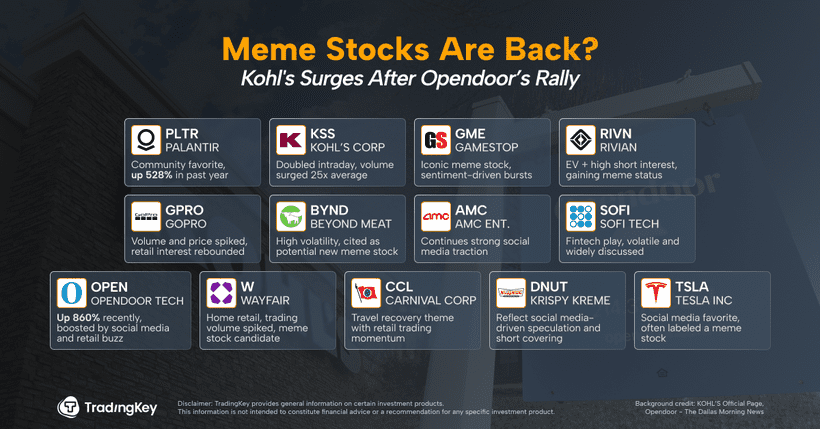Nasdaq Q2 Revenue Jumps 13 Percent

Key Points
- Nasdaq (NASDAQ:NDAQ) beat both GAAP revenue and non-GAAP earnings expectations in Q2 2025, posting double-digit growth in recurring revenues and non-GAAP operating income.
- Record results in Market Services and robust client demand in both Financial Technology and Capital Access Platforms were key strengths this period.
- The company raised its quarterly dividend to $0.27 per share in Q2 2025, updated its 2025 non-GAAP operating expense guidance to a range of $2,295 million to $2,335 million, and maintained its 2025 non-GAAP tax rate guidance, while highlighting increased investment costs and regulatory-driven sales cycle delays.
Nasdaq (NASDAQ:NDAQ), a global technology company powering capital markets and financial services, reported its Q2 2025 results on July 24, 2025. The company delivered GAAP revenue of $1.31 billion and non-GAAP earnings per share (EPS) of $0.85, both surpassing consensus estimates of $1.28 billion and $0.81, respectively. Recurring revenue grew 9% and operating income (non-GAAP) grew at a double-digit rate, driven by strong client demand and innovations across both its Financial Technology and Capital Access Platforms. Overall, the quarter showed operational progress, though rising costs and lengthening sales cycles in regulatory technology signal areas to watch going forward.
| Metric | Q2 2025 | Q2 2025 Estimate | Q2 2024 | Y/Y Change |
|---|---|---|---|---|
| EPS (Non-GAAP) | $0.85 | $0.81 | $0.69 | 24% |
| Revenue (Non-GAAP) | $1.31 billion | $1.28 billion | $1.16 billion | 13% |
| Non-GAAP Operating Income | $721 million | $620 million | 16% | |
| Non-GAAP Operating Margin | 55% | 53% | 2 pp | |
| Annualized Recurring Revenue | $2.93 billion | $2.66 billion | 10% |
Source: Analyst estimates for the quarter provided by FactSet.
Business Overview and Focus Areas
Nasdaq operates at the intersection of technology and finance. It is best known for running the Nasdaq Stock Market, but its reach extends to providing trading, data, software, and analytics to financial institutions and corporations worldwide. Nasdaq manages and provides its products and services through three business segments: Capital Access Platforms, Financial Technology, and Market Services.
The stack of offerings ranges from traditional exchange listing and trading to modern SaaS (software-as-a-service) platforms that help banks and corporates manage everything from regulatory compliance to market analytics and risk surveillance. Over the past few years, the company emphasized steady recurring revenue, cloud and AI innovation, and international expansion. Recent strategic focus includes deepening cloud integration, boosting cross-selling after its Adenza acquisition, and increasing the share of SaaS in its recurring revenue streams. Key drivers of success remain technology leadership, robust regulatory compliance capabilities, and the ability to attract new clients through innovation and trusted infrastructure.
Quarter Review: Results, Product Momentum, and Segment Detail
The second quarter saw Nasdaq achieve broad-based growth and notable outperformance across its main business lines.
Revenue and Profits: The revenue figure of $1.31 billion (GAAP) represented a 13% jump over the same period last year. Non-GAAP EPS came in at $0.85, up 24% over the prior year, while operating income grew by 16%. Non-GAAP operating margin also edged higher, from 53% to 55%. This indicates that the company achieved greater efficiency, even as it invested in new technology and talent.
Solutions Segment: Solutions revenue—which covers both Capital Access Platforms and Financial Technology—grew 10% year-over-year, with both core sub-segments making strong contributions.
Financial Technology: This segment includes cloud-based risk, compliance, and trading solutions. It recorded 10% growth in revenue, with annualized recurring revenue (ARR) for Financial Technology growing 12% year-over-year. Regulatory Technology made progress with a new large client and several upsells, but did note extended sales cycles due to shifting U.S. regulatory timelines.
Capital Access Platforms: This product line includes listing-related data, workflow, and index solutions. It posted 9% organic revenue growth, driven by a 17% rise in Index revenue. Net inflows into Nasdaq-linked exchange-traded products (ETPs) totaled $20 billion, and the number of ETPs tracking the company’s indices increased sharply.
Market Services: This unit, which comprises trading platforms and associated services, delivered a record $306 million in net revenue, an increase of 22%. Volumes across U.S. equities and derivatives hit all-time highs, and the company reported its 46th straight quarter of leadership in IPO listings, with 38 new operating company IPOs raising more than $3.5 billion. Market share for U.S.-listed securities, combining on- and off-exchange activity, hit 61.6%, up from 59.0% in Q2 2024.
Recurring Revenue and SaaS Growth: Annualized recurring revenue reached $2.93 billion, which is 10% above the prior year. Of this, 37% now comes from SaaS products.
Expenses and Margins: Operating expenses on a non-GAAP basis rose 9%, largely reflecting increased investments in technology and people. But with revenues advancing even faster in some segments, non-GAAP margins still improved.
Product and Innovation: Technological innovation was a central theme this quarter. Nasdaq Verafin’s “Agentic AI” digital workers, now in beta, promise to automate compliance reviews and lower client workload. The company also expanded its partnership with Amazon Web Services (AWS) for cloud-based market infrastructure. Recent technology wins include managed marketplace deployments and cloud-based platform launches for clients in Latin America.
Capital Strategy and Shareholder Returns: The company continued to emphasize a focus on organic growth and deleveraging after the large 2023 Adenza acquisition. During the quarter, it returned $155 million to shareholders via dividends and $100 million through stock buybacks, and repaid $400 million of debt. Management reaffirmed its goal of more than $100 million in annual run-rate cross-sell revenue by the end of 2027.
Dividend Update: The company raised its quarterly dividend by 13% to $0.27 per share, continuing its trend of regular increases.
Looking Ahead: Management Outlook and Watch Items
Management maintained non-GAAP operating expense guidance, now at $2.295–$2.335 billion for FY2025, reflecting minor foreign exchange effects but otherwise an unchanged outlook. Non-GAAP tax rate guidance for 2025 remains at 22.5%–24.5%. No change was announced to medium-term revenue growth targets in any segment for FY2025, with leaders expressing confidence in the current sales pipeline, especially for Financial Technology products. No explicit top-line or EPS guidance was shared for the full year.
Delays in regulatory technology sales cycles, driven by shifting U.S. regulatory timelines, present a risk to growth. Intensifying competition from both established exchanges and new entrants—like the Texas Stock Exchange—remains on the radar for listings market share. Overall, Nasdaq credited broad client engagement, cloud and AI innovation, and a stable recurring revenue base as tailwinds for future performance.
Revenue and net income presented using U.S. generally accepted accounting principles (GAAP) unless otherwise noted.
Where to invest $1,000 right now
When our analyst team has a stock tip, it can pay to listen. After all, Stock Advisor’s total average return is 1,037%* — a market-crushing outperformance compared to 182% for the S&P 500.
They just revealed what they believe are the 10 best stocks for investors to buy right now, available when you join Stock Advisor.
*Stock Advisor returns as of July 21, 2025
JesterAI is a Foolish AI, based on a variety of Large Language Models (LLMs) and proprietary Motley Fool systems. All articles published by JesterAI are reviewed by our editorial team, and The Motley Fool takes ultimate responsibility for the content of this article. JesterAI cannot own stocks and so it has no positions in any stocks mentioned. The Motley Fool recommends Nasdaq. The Motley Fool has a disclosure policy.





